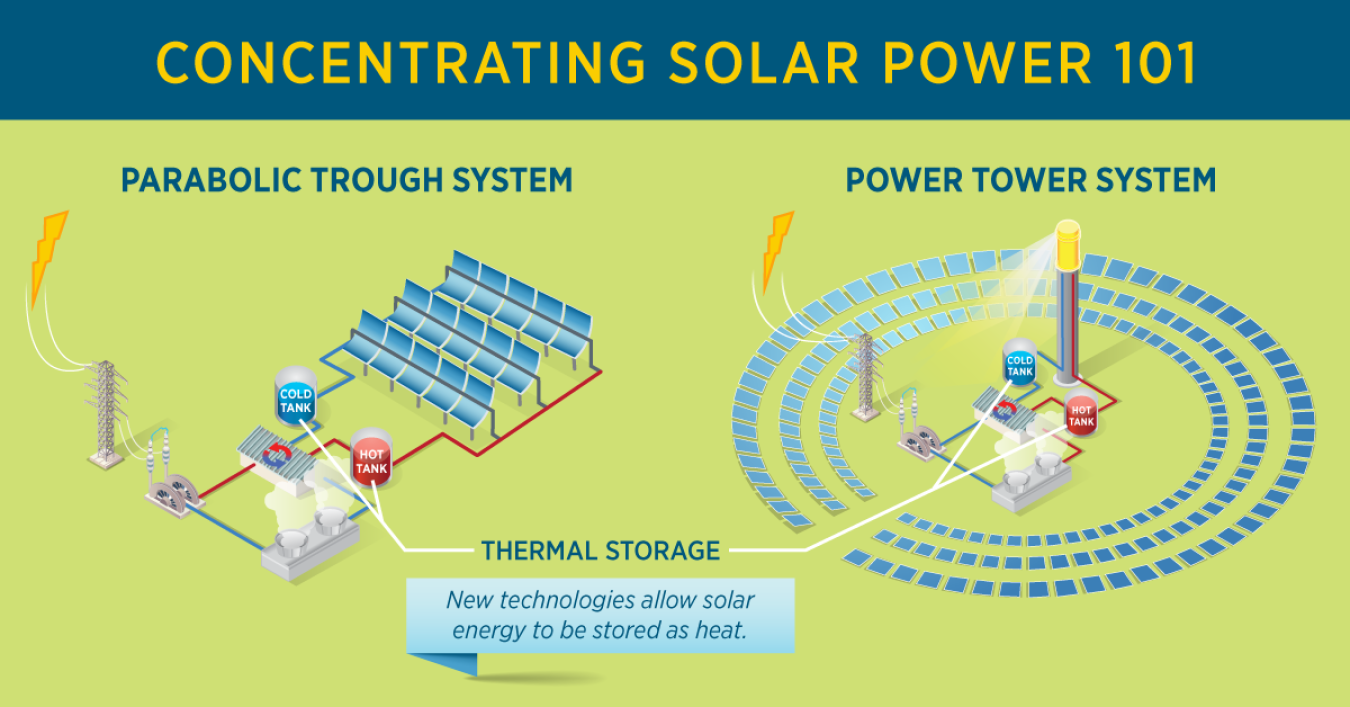What is Concentrated Solar Power?
Concentrated solar power (CSP) is a technology that uses mirrors or lenses to concentrate sunlight onto a receiver. The receiver absorbs the concentrated sunlight and converts the heat energy into electricity. CSP is a form of renewable energy and is typically used in large-scale power plants.
CSP technology has been in use for several decades, with the first commercial CSP plant built in the 1980s. Today, there are several large-scale CSP plants in operation around the world, with many more under development. CSP is particularly popular in areas with high levels of direct sunlight, such as the deserts of the southwestern United States, the Middle East, and North Africa.

The image above shows how contentrated solar energy is recollected.
What are the advantages of Concentrated Solar Power
CSP technology has several advantages over other forms of renewable energy, such as wind and photovoltaic (PV) solar power. CSP plants can store energy and generate electricity even when the sun is not shining. This is because the concentrated sunlight heats a fluid that can be stored and used to generate electricity later on. CSP plants can also generate more electricity per unit of land compared to PV solar power, as the mirrors used in CSP can concentrate sunlight over a larger area.
Types of CSP
There are several different types of CSP technology, each with its own unique advantages and disadvantages. One of the most common types of CSP is parabolic troughs, which use parabolic mirrors to concentrate sunlight onto a receiver tube. Another type of CSP is tower technology, which uses a central tower to collect and concentrate sunlight from a field of mirrors. Other types of CSP include dish systems and linear Fresnel reflectors.
Conclusion
In conclusion, concentrated solar power refers to the technology of using mirrors or lenses to concentrate sunlight onto a receiver, which converts the heat energy into electricity. CSP is a form of renewable energy and is typically used in large-scale power plants. CSP technology has several advantages over other forms of renewable energy, including the ability to store energy and generate electricity even when the sun is not shining. There are several different types of CSP technology, each with its own unique advantages and disadvantages.
Frequently asked questions
What is the efficiency of Concentrated Solar Power?
The efficiency of CSP plants can vary depending on several factors, such as the type of technology used, the location of the plant, and the weather conditions. On average, CSP plants can achieve an efficiency of around 35%, which is higher than most other forms of renewable energy.
What are the environmental benefits of Concentrated Solar Power?
CSP technology has several environmental benefits. Unlike fossil fuels, CSP does not produce greenhouse gas emissions or other air pollutants that can harm human health and the environment. CSP plants also use very little water compared to other forms of power generation, such as coal-fired power plants.
What is the future of Concentrated Solar Power?
The future of CSP looks promising, with many new plants under development around the world. CSP technology has the potential to become a major source of renewable energy, especially in areas with high levels of direct sunlight. As the technology continues to improve and costs continue to decline, CSP is expected to become even more competitive with other forms of power generation in the coming years.








